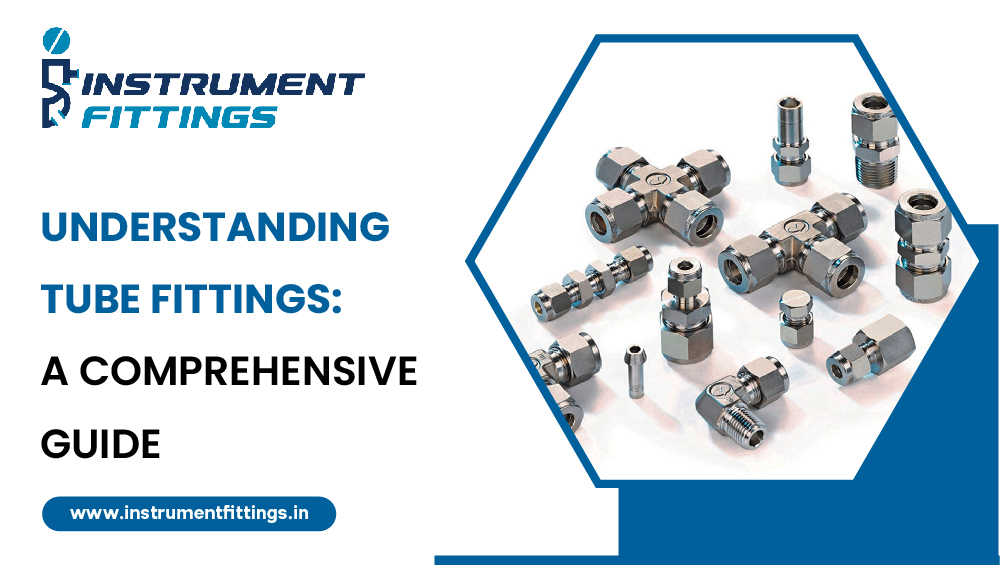Types of Tube Fittings:
- Compression Fittings: Compression fittings utilize compression force to secure the connection between two tubes. They typically consist of a nut, a ferrule (or multiple ferrules), and a body. These fittings are widely used in hydraulic systems, refrigeration, and instrumentation applications.
- Push-to-Connect Fittings: Also known as push-fit or quick-connect fittings, these fittings allow for easy and rapid installation without the need for tools. They feature a gripping mechanism that securely holds the tube in place. Push-to-connect fittings are popular in pneumatic systems, water purification, and air brake systems.
- Flare Fittings: Flare fittings are commonly used in high-pressure applications, such as gas lines and hydraulic systems. They involve flaring the end of the tube to create a sealing surface, which is then connected to a corresponding fitting with a matching flare.
- Threaded Fittings: Threaded fittings utilize threads on both the fitting and the tube to create a secure connection. They come in various thread types, including NPT (National Pipe Thread), BSP (British Standard Pipe), and metric threads. Threaded fittings are prevalent in plumbing, HVAC, and industrial piping systems.
Applications of Tube Fittings:
– Industrial Manufacturing: Tube fittings are extensively used in industrial manufacturing processes for fluid transfer, hydraulic systems, and pneumatic applications.
– Automotive Industry: In the automotive sector, tube fittings are vital for fuel lines, brake systems, and air conditioning systems.
– Aerospace: Aerospace applications require high-performance tube fittings for fuel lines, hydraulic systems, and aircraft instrumentation.
– Plumbing and HVAC: Tube fittings are ubiquitous in residential, commercial, and industrial plumbing systems, as well as heating, ventilation, and air conditioning (HVAC) systems.
– Medical Equipment: Precision tube fittings are utilized in medical devices, such as chromatography systems, laboratory equipment, and medical gas delivery systems.
Benefits of Tube Fittings:
– Leak-Free Seals: Properly installed tube fittings ensure leak-free connections, preventing costly downtime and environmental hazards.
– Versatility: Tube fittings come in various materials, sizes, and configurations, allowing for versatile applications across different industries and environments.
– Ease of Installation: Many tube fittings, such as push-to-connect fittings, offer quick and effortless installation, reducing labor costs and downtime.
– Reliability: High-quality tube fittings are engineered for durability, reliability, and long-term performance, even in demanding operating conditions.
– Customization: Manufacturers can customize tube fittings to meet specific requirements, including material compatibility, pressure ratings, and dimensional specifications.
Installation Considerations:
– Proper Sizing: Selecting the correct size and type of tube fitting is crucial for ensuring a secure and leak-free connection.
– Surface Preparation: Properly deburring and cleaning the tube ends are essential for achieving a tight seal and preventing contamination.
– Correct Assembly: Follow manufacturer recommendations and industry best practices for assembling tube fittings to avoid over-tightening, cross-threading, or damaging the fittings.
– Testing and Inspection: Conduct pressure tests and visual inspections to verify the integrity of the installed tube fittings and detect any leaks or defects.
– Maintenance: Regular maintenance and inspection of tube fittings are necessary to ensure continued performance and reliability, including replacing worn-out components and addressing any signs of wear or damage.
In conclusion, tube fittings are integral components in various industries, offering versatile, reliable, and leak-free connections for fluid and gas transfer applications. Understanding the different types, applications, benefits, and installation considerations of tube fittings is essential for ensuring optimal performance and safety in industrial, automotive, aerospace, and plumbing systems.


